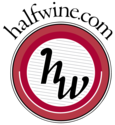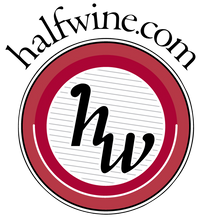Back to: Past Wines Archive
Red
Bordeaux
Bordeaux Blend
Cork
Medium Body
Light Oak
ABV 13.5%
Tasting notes
A dense wine with a bouquet of blackcurrant and blueberry. In the mouth, the first impression is straightforward yet delicate with fine tannins. Ideal with roasts, steaks and hard cheeses.
Why we recommend this wine
One of the top 10 ‘Best buys of the Northern Medoc’ in the April 20 issue of Decanter scoring 90 points and the current vintage is just as good. Remember to decant about an hour before drinking otherwise the last sip will be the best!
The wine
A blend with 60% Cabernet Sauvignon, 35% Merlot, 5% Petit Verdot (but this can vary by vintage). Cabernet Sauvignon providing a wine full of finesse and bouquet, with substantial keeping power. Merlot with its fruity, tasty character brings fullness to the wine. The sweet violet fragrance of Petit Verdot mingles – in small quantities – with the blend to add the finishing touches to the charismatic complexity of this wine. The wine matures for 12 months in French oak barrels (30% new barrels) before bottling.
The wine estate
A Danish négociant, Hermann Cruise, made history in Bordeaux in the late 1840’s (which was a time of revolutionary agitation across Europe) when he took a huge gamble and bought almost the entire 1847 vintage. He made a fortune and bought many wine estates including Château Laujac which was, and still is, a working farm and a vineyard.
The huge estate of Laujac is located in the heart of the Médoc region. It covers some 400 hectares in total, of which 75 hectares are planted to vines. Human occupation of Ch Laujac finds its origins in the conquest of Gaul by the Romans. In the Gironde area, names ending in " ac " usually serve to identify a Gallo-Roman villa. While digging the foundations for the cellar during the nineteenth century, the workers found mosaic fragments, polished axes, flint work and pottery. The Château was built in the neoclassical style in 1810.
Due to the “phylloxera invasion” at the beginning of the 20th century, 2 World Wars and the terrible frosts of 1956, there were only 8 hectares of vines remaining when Bernard Cruse took over the management of the estate in 1957. He undertook the revival of the vineyards, modernization of the technical tools and renovation of the buildings. After 55 vintages, this passionate winemaker handed the reins to the current generation of the family in 2012. The vineyards now cover over 60 hectares.
The proximity of the Gironde estuary and the Atlantic Ocean provide very favourable conditions for the vines and good ripening of the grapes. The vineyards are farmed on a ‘nurture nature’ basis. Below the vineyards lie lush meadows created by a polder dam, where Limousine cattle graze peacefully along with horses.
chateaulaujac.com
Food and wine
Serve with pike-perch in red wine, duck breast with cranberries or a joint of beef with mushroom sauce; and strong, hard cheeses. Also see our guide to pairing food and wine here.
Did you know?
In Bordeaux, the Left Bank (on your left as you look from the town to the sea) vineyards are dominated by Cabernet Sauvignon, while the Right Bank ones focus on Merlot. The reason is because of the soil differences. But even on the Left Bank many wines have a majority of Merlot which thrives on chalky-clay soils; Cabernet Sauvignon prefers gravelly soils. We recall having a picnic lunch on the edge of a vineyard and noticing that the leaves on one section of vines were different to those of another section – visible evidence of different vines for different soils.
A dense wine with a bouquet of blackcurrant and blueberry. In the mouth, the first impression is straightforward yet delicate with fine tannins. Ideal with roasts, steaks and hard cheeses.
Why we recommend this wine
One of the top 10 ‘Best buys of the Northern Medoc’ in the April 20 issue of Decanter scoring 90 points and the current vintage is just as good. Remember to decant about an hour before drinking otherwise the last sip will be the best!
The wine
A blend with 60% Cabernet Sauvignon, 35% Merlot, 5% Petit Verdot (but this can vary by vintage). Cabernet Sauvignon providing a wine full of finesse and bouquet, with substantial keeping power. Merlot with its fruity, tasty character brings fullness to the wine. The sweet violet fragrance of Petit Verdot mingles – in small quantities – with the blend to add the finishing touches to the charismatic complexity of this wine. The wine matures for 12 months in French oak barrels (30% new barrels) before bottling.
The wine estate
A Danish négociant, Hermann Cruise, made history in Bordeaux in the late 1840’s (which was a time of revolutionary agitation across Europe) when he took a huge gamble and bought almost the entire 1847 vintage. He made a fortune and bought many wine estates including Château Laujac which was, and still is, a working farm and a vineyard.
The huge estate of Laujac is located in the heart of the Médoc region. It covers some 400 hectares in total, of which 75 hectares are planted to vines. Human occupation of Ch Laujac finds its origins in the conquest of Gaul by the Romans. In the Gironde area, names ending in " ac " usually serve to identify a Gallo-Roman villa. While digging the foundations for the cellar during the nineteenth century, the workers found mosaic fragments, polished axes, flint work and pottery. The Château was built in the neoclassical style in 1810.
Due to the “phylloxera invasion” at the beginning of the 20th century, 2 World Wars and the terrible frosts of 1956, there were only 8 hectares of vines remaining when Bernard Cruse took over the management of the estate in 1957. He undertook the revival of the vineyards, modernization of the technical tools and renovation of the buildings. After 55 vintages, this passionate winemaker handed the reins to the current generation of the family in 2012. The vineyards now cover over 60 hectares.
The proximity of the Gironde estuary and the Atlantic Ocean provide very favourable conditions for the vines and good ripening of the grapes. The vineyards are farmed on a ‘nurture nature’ basis. Below the vineyards lie lush meadows created by a polder dam, where Limousine cattle graze peacefully along with horses.
chateaulaujac.com
Food and wine
Serve with pike-perch in red wine, duck breast with cranberries or a joint of beef with mushroom sauce; and strong, hard cheeses. Also see our guide to pairing food and wine here.
Did you know?
In Bordeaux, the Left Bank (on your left as you look from the town to the sea) vineyards are dominated by Cabernet Sauvignon, while the Right Bank ones focus on Merlot. The reason is because of the soil differences. But even on the Left Bank many wines have a majority of Merlot which thrives on chalky-clay soils; Cabernet Sauvignon prefers gravelly soils. We recall having a picnic lunch on the edge of a vineyard and noticing that the leaves on one section of vines were different to those of another section – visible evidence of different vines for different soils.




